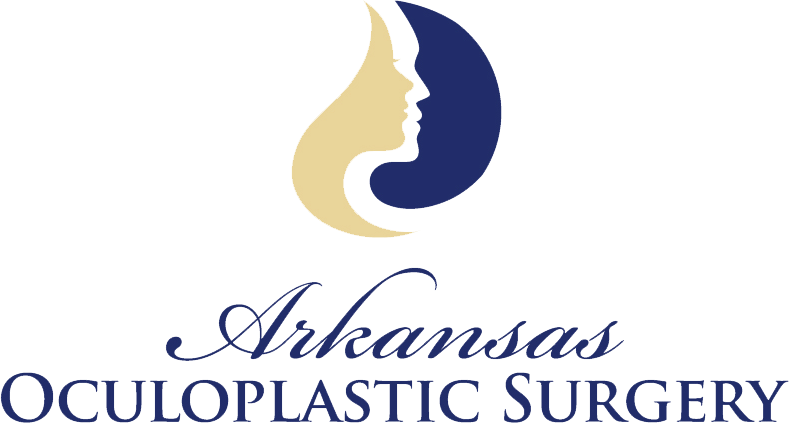
Blepharospasm
Conveniently located to serve Little Rock
Improve blepharospasm symptoms with non-surgical or surgical treatments in Little Rock. Blepharospasm is a medical condition where eyelid movements like blinking or twitching cannot be controlled. If not treated immediately, it can develop into chronic eye twitching.
At Arkansas Oculoplastic Surgery, PLLC, our team of eye experts can diagnose blepharospasm properly. Schedule your consultation to learn more about our treatment options.
What Is Blepharospasm?
Blepharospasm, or benign essential blepharospasm, is an eye condition where eyelid movements are uncontrolled. Eyelid twitching is common and can go away on its own. However, if your eyelid twitching is consistent, it is highly recommended to consult with a doctor.
Blepharospasm symptoms can overlap with ptosis. Patients who are taking medications for Parkinson’s disease can experience uncontrolled eye twitching as well.
Causes of Blepharospasm
The root cause of blepharospasm is unknown at present. Theories suggest that eyelid twitching can be a result of disrupted chemical signals in the nerve cells of the brain’s movement control center. No studies have confirmed what disturbs the chemical signals to this date.
How Is Blepharospasm Diagnosed?
During the consultation, candidates for blepharospasm treatment are asked about their complete medical history. This will help rule out if some medications are causing the eyelid twitching. A physical eye exam will also be performed to check the condition of eye twitching.
Blepharospasm Treatment
While the cause of blepharospasm is not known, the symptoms can worsen under heavy emotional stress. Stress management can be a form of treatment for those with mild blepharospasm symptoms.
The popular cosmetic treatment Botox (botulinum toxin type A) can also help relieve eyelid twitching. Botox is a toxin that works by blocking the nerve signals that tell muscles to move. This leads to controlled muscle paralysis in the injected area. While most people get Botox for improving wrinkles on the skin, blepharospasm patients can get the treatment to stop their eyelids from twitching.
The full results of Botox are effective a week after the treatment. The effects of the treatment can last for 3-4 months.
Blepharospasm can also be treated with medication like lithium, diazepam (Valium®), or motility drugs (Artane®). These medications are recommended if Botox is not working for the patient.
Finally, blepharospasm patients can undergo myectomy surgery if the non-surgical treatments do not achieve satisfactory results. The procedure involves removing some or all of the eyelid and eyebrow muscles responsible for squinting.
After Treatment
Recovering from blepharospasm treatment will depend on the recommended treatment for your eye condition. Botox and oral medications have no downtime. Patients can resume their daily activities after the treatment. While this is convenient for many, the results are not permanent.
Blepharospasm patients can experience permanent results from myectomy surgery. Time off from work and strenuous activities will be required during the first week after the procedure. Full recovery is longer compared to other cosmetic procedures; eyelid myectomy patients can experience full recovery after 6 months and in some cases up to a year.
Contact Us to Learn More
To learn more about treatments for blepharospasm in Little Rock, contact Arkansas Oculoplastic Surgery, PLLC and schedule a consultation. We understand that vision is the most useful yet also the most delicate among the five senses. It is Dr. Wade Brock’s priority to help you preserve and maintain eye function as much as possible. Let’s begin taking care of your vision today!
Testimonial
Dr. Brock did my orbital decompression surgery and did an outstanding job. He is caring, compassionate and very professional. I would recommend him in a heartbeat. Thanks Dr. Brock for everything and for helping me get my life back.
Terms:
- Blepharospasm: It refers eyelid muscles around the eye which close involuntarily. This may cause loss of vision, especially while reading, headaches, and eyebrow strain. The early symptoms of blepharospasm include increased blink rate (77%), eyelid spasms (66%), eye irritation (55%), midfacial or lower facial spasm (59%), brow spasm (24%), and eyelid tic (22%).
- Ptosis: Ptosis is also known as Blepharoptosis. It refers to an eyelid which is droopy. This may cause a loss of vision, especially while reading, headaches, and eyebrow strain.







